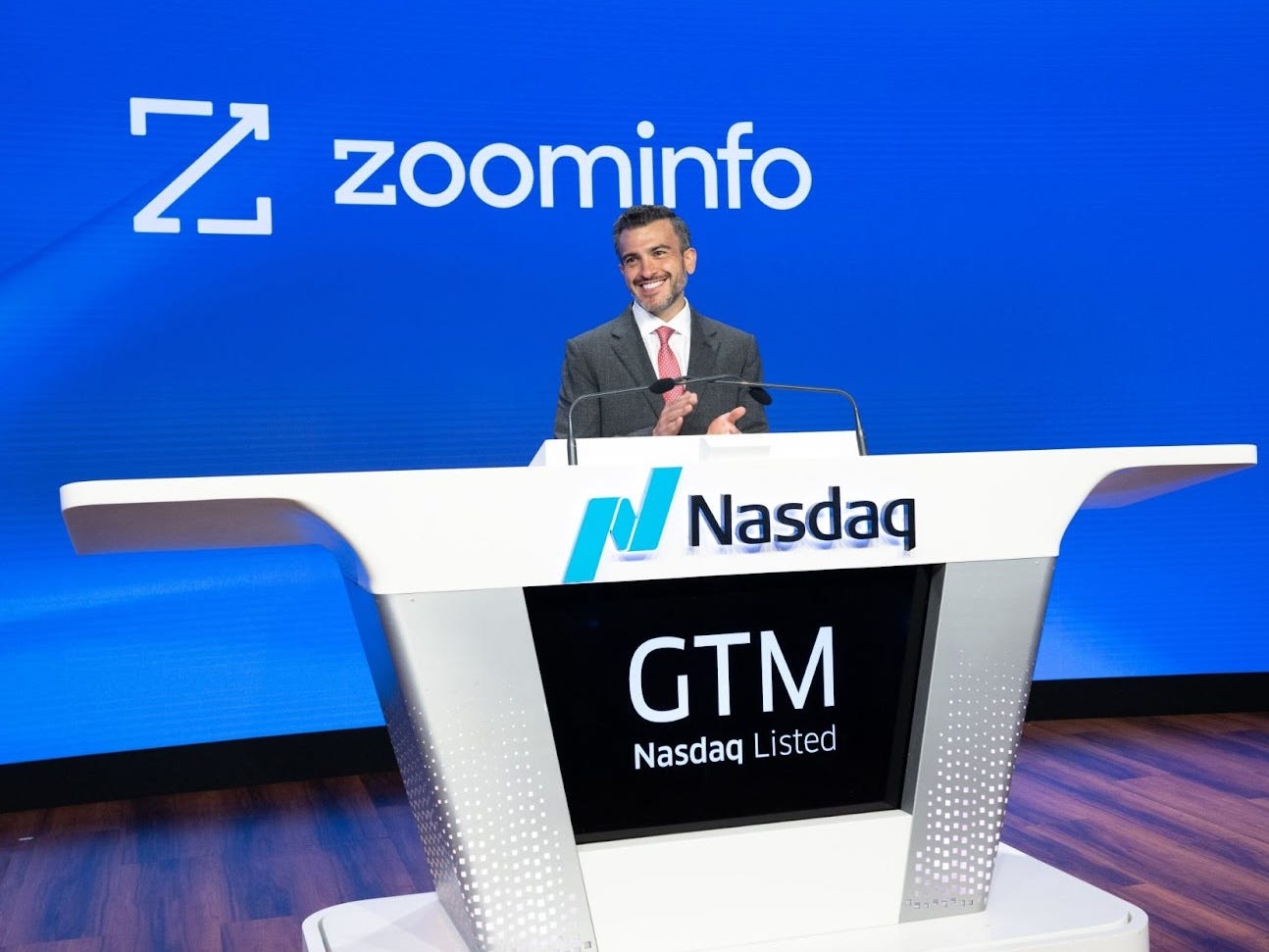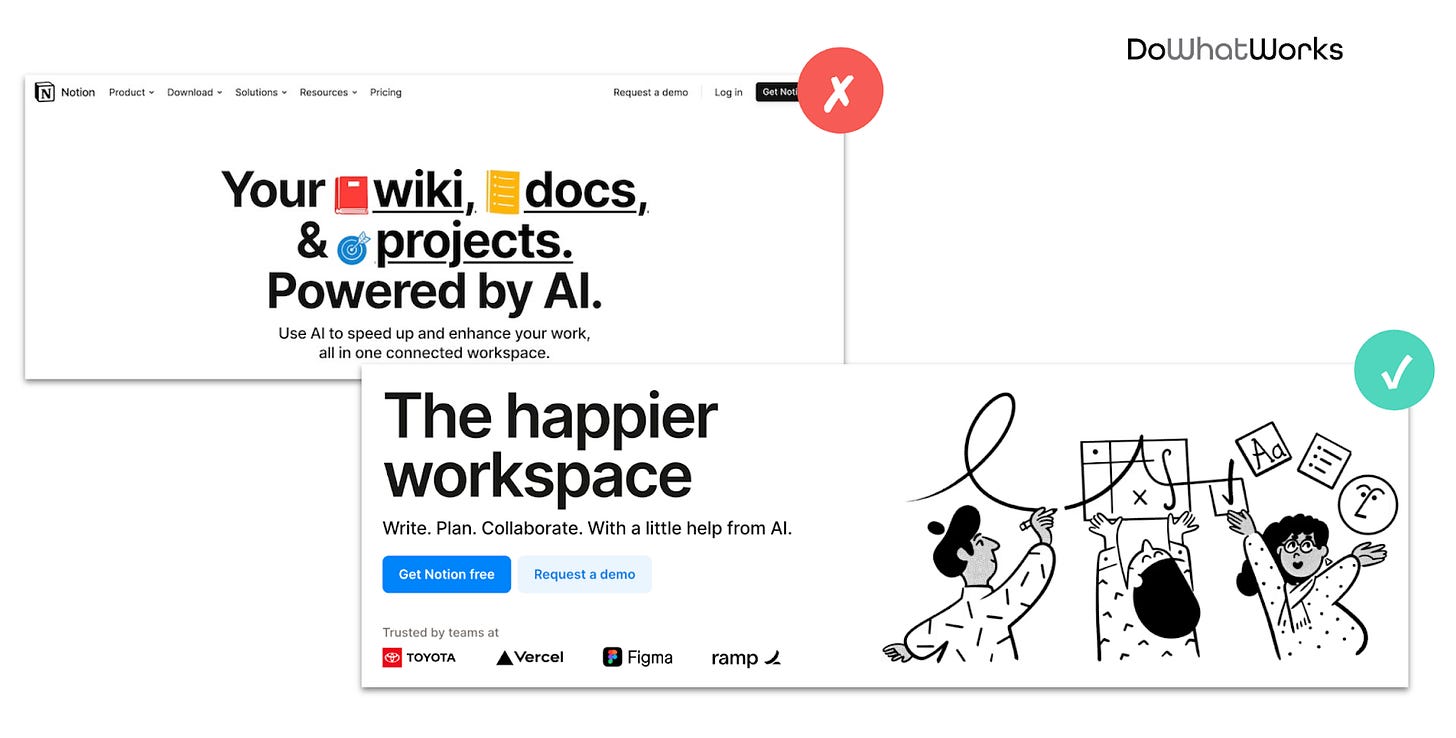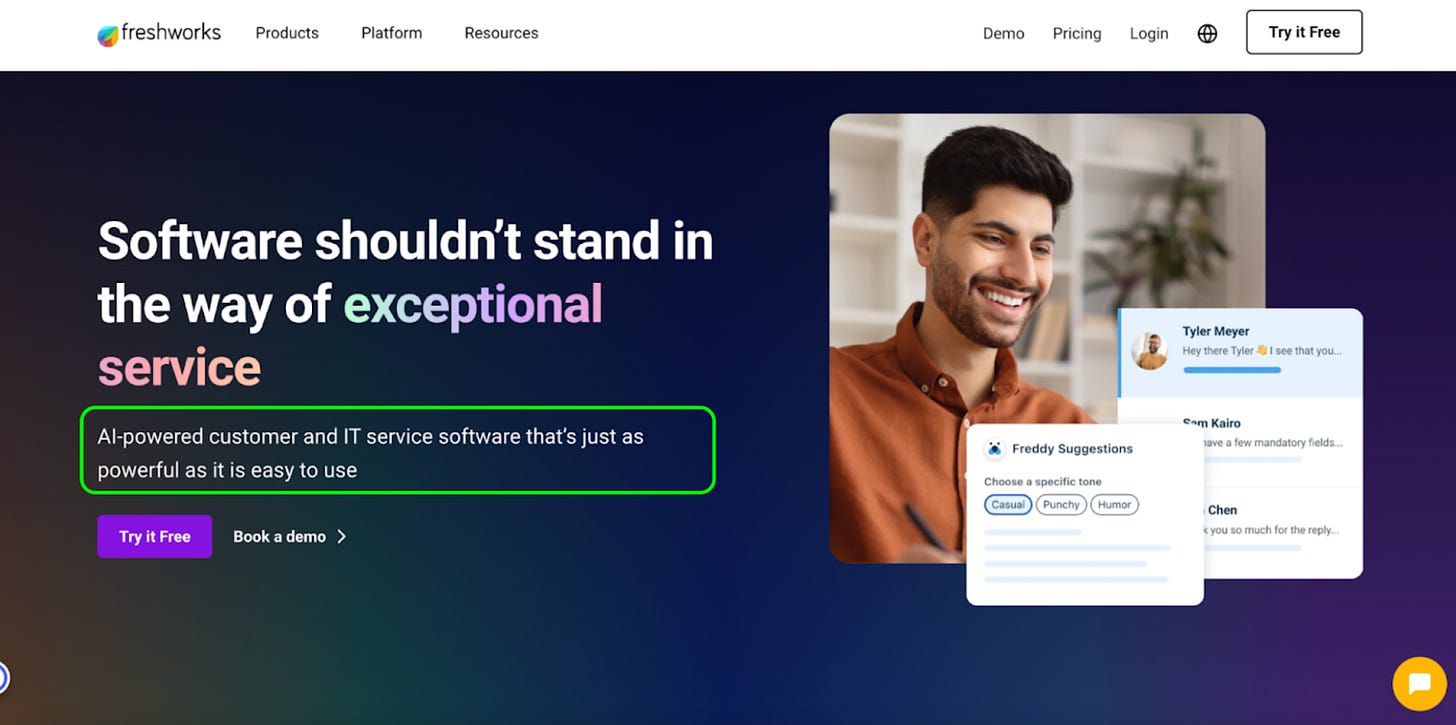
Family drama “7th Heaven” is eyeing a comeback in reboot form with Jessica Biel as a producer.

Family drama “7th Heaven” is eyeing a comeback in reboot form with Jessica Biel as a producer.

When the green flag drops May 25 to start the 109th Indianapolis 500, Fox Sports may be the day’s biggest winner in its broadcast debut.

Is the merger of Charter and Cox a last gasp effort to fend off their ravenous competitors and avoid the business equivalent of viral collapse?

“S.W.A.T.,” which concluded on May 16 after eight seasons, lives on in the form spinoff “S.W.A.T.: Exiles.”

Hello and welcome to The GTM Newsletter by GTMnow – read by 50,000+ to scale their companies and careers. GTMnow shares insight around the go-to-market strategies responsible for explosive company growth. GTMnow highlights the strategies, along with the stories from the top 1% of GTM executives, VCs, and founders behind these strategies and companies.
ZoomInfo just made a bold move: they changed their Nasdaq ticker from $ZI to $GTM.
From our lens, this is a brilliant move and signals something far bigger than a rebrand.
The market also took notice. ZoomInfo shares jumped 7.4% to $10.04 on the day of the announcement!
It’s a bet and a signal that go-to-market isn’t just a function, it’s the system every company needs to win.

To really understand what’s happening, let’s zoom out.
Shipping product is easier than ever. AI has eaten chunks of the stack. Cursor, Poolside, Create, GitHub Copilot – tools like these are turning weeks of engineering work into prompts.
Even Sam Altman said Cursor might be the most exciting app-layer product he’s seen because it can basically write code for you.
What that means for founders is simple: the technical moat is shrinking.
So if the playing field is leveling on the build side, what’s left? Distribution.
Go-to-market becomes your edge.
This is the wave ZoomInfo is riding. And it’s the same one we’ve been building around at GTMfund for years.
For years, ZoomInfo was known as the best B2B data company in the world. “Data” was their identity. But they’ve transformed from just B2B data to a broader scope, a full platform for go-to-market operators. CEO Henry Shuck shares a quick video on this here.
ZoomInfo is betting its public identity on a new idea: that companies no longer win just by having the best product – they win by going to market better and faster than anyone else. The team proudly shared thoughts on this moment, like the COO here.
Their updated platform reflects that:
Their thesis: Sales, marketing, and RevOps shouldn’t run in silos. They should operate as one integrated revenue engine – aligned by shared data and driven by the same signals.
This shift mirrors what we see every day with early-stage teams. You’re not struggling because your product isn’t good – you’re struggling because your GTM systems are duct-taped together. Misaligned messaging, broken handoffs, CRM chaos, a lack of clarity on what’s working.
ZoomInfo is saying: what if all of that was one system?
Here’s what this all boils down to:
You don’t need another dashboard. You need clarity.
You don’t need more tools. You need GTM alignment.
You don’t need fluff. You need results.
And you need it early. Because the winners in SaaS today don’t just ship, they execute.
We have been hearing this in GTMfund founder meetings for years. When we ask what their biggest priorities are when building the cap table, we almost always hear “funds that support distribution” as number 1.
Even the data shows that go-to-market execution is what keeps founders up at night.

Changing a Nasdaq symbol isn’t a light lift. It takes months of planning, legal, investor comms, and a hard internal reset. You don’t do it unless you’re fully committing to a new identity.
ZoomInfo just did that. And in doing so, they validated something early-stage founders already know deep down:
Product is becoming table stakes. GTM is the differentiator.
ZoomInfo isn’t just making a branding move. They’re putting their flag in the ground.
GTM is the differentiator.
We’ve been saying it for years. ZoomInfo just made it official.
If you want a front-row seat to what the future of GTM looks like, ZoomInfo is hitting the road. The GTM 2025 Roadshow is taking place right now, you can sign up here:
 Recommendations
RecommendationsWatch the AI SDR Summit (it’s on-demand and free!)
Stream Qualified’s first annual AI SDR Summit on-demand and hear how leaders from companies like G2, 6sense, Salesforce, and so many more are leveraging the power of AI SDR agents to scale their inbound and outbound pipe gen motions.
Check out candid conversations about the state of the AI SDR agent landscape, inbound and outbound playbooks, and real results from marketers at the forefront of the agentic marketing era.
 More for your eardrums
More for your eardrumsGTM 146: The Future of Search, AI, and Digital Presence with Mike Walrath, CEO of Yext
Mike Walrath is the CEO of Yext and a longtime builder in the digital media and advertising space. From founding Right Media (acquired by Yahoo!) to co-founding Moat (acquired by Oracle), Mike’s spent the last two decades shaping how the internet works behind the scenes.
Listen on Apple, Spotify, YouTube, or wherever you get your podcasts by searching “The GTM Podcast.”
 Startup to watch
Startup to watchOwner – closed a $120M Series C and now sits at a $1B valuation. An inside look to their latest funding co-led by Alex Kurland of Meritech and Shalini Rao of Headline.
Stotles – launched a major revamp of their platform to help grow public sector business. It has one tool where teams can create strategy, build pipeline, track tenders and win bids.
 More for your eyeballs
More for your eyeballsAlexa Grabell went from hacking together sales tools to building Pocus—a platform trusted by Asana and Canva. Her secret is 350+ customer interviews, a community-first mindset, and the kind of grit every GTM leader needs.
 Hottest GTM jobs of the week
Hottest GTM jobs of the weekSee more top GTM jobs on the GTMfund Job Board.
If you’re looking to scale your sales and marketing teams with top talent, we couldn’t recommend our partner Pursuit more. We work closely together to be able to provide the top go-to-market talent for companies on a non-retainer basis.
 GTM industry events
GTM industry eventsUpcoming go-to-market events you won’t want to miss:
The post ZoomInfo Just Changed Its Ticker to $GTM – Here’s Why That Matters appeared first on GTMnow.

Content creators on TikTok and YouTube are shifting public perception and media coverage around Diddy’s trial. Here’s how they’re influencing the narrative.

Hello and welcome to The GTM Newsletter by GTMnow – read by 50,000+ to scale their companies and careers. GTMnow shares insight around the go-to-market strategies responsible for explosive company growth. GTMnow highlights the strategies, along with the stories from the top 1% of GTM executives, VCs, and founders behind these strategies and companies.
In 2023, we saw a surge of SaaS brands adding anything “AI-powered” or “AI-driven” into their website headlines. A quick use of Wayback Machine for the top 100 SaaS brands will show you just how pervasive it was.
The optics were that if AI wasn’t integral to your roadmap and marketing, you were losing relevance.
Many venture capital firms shifted their investments almost entirely into AI startups.
As this flood of AI messaging hit, a lot of people quickly became numb to it.
Now in 2025, AI promises have simply become baseline expectations. Describing your product as “AI-powered” is like saying it’s internet-connected in 2005. It’s expected, not a value add.
With this expectation, we’re now seeing companies ditching AI messaging in their website headers.
Companies are testing, and the results are showing. We see brands, such as Notion, testing the impact of:
In the test example below, AI messaging in the sub-header won out over having it in the header.

They kept the focus on the core value proposition of helping teams write, plan and collaborate to create better workspaces, while still having the AI inclusion.
This trend of AI reinforcing and amplifying the core UVP (unique value proposition) is gaining momentum.
We see this shift towards having no AI in the hero header (but including it in the sub-header) across dozens of top SaaS brands: Klaviyo, Monday, Freshworks, MongoDB, Snowflake, Braze, Cloudflare, GitLab, ActiveCampaign and countless others.
For example, here is how Freshworks positions it:

In a market where almost every product claims to have AI, differentiation can’t come from the tech itself. It has to come from the outcome, the problem you solve, and the clarity of your message.
If you’re building or marketing an AI product, use this simple 3-step framework to test and refine your positioning:
1. Start with the pain (what’s broken?)
Don’t lead with tech. Lead with the real problem your buyer is facing. Make it visceral, specific, and urgent.
For example: “Sellers spend 40% of their time manually triaging email.”
2. Move to the outcome (what improves?)
Next, show what your product actually helps people achieve.
For example: “Our users reclaim 4+ hours per week and use it to close deals.”
3. Then show how AI enables the outcome
Now that the user cares, you can explain how AI helps make that happen. But avoid buzzwords, make it visual and concrete.
Bad: “We use AI to streamline sales workflows.”
Better: “Our AI automatically categorizes, prioritizes, and drafts replies – so reps can focus on revenue.”
A quick cheatsheet for better AI messaging:
Leading with “AI-powered” used to signal innovation. Now, it risks blending you into the noise. Companies are putting product value back at the center and letting AI show up only when it adds clarity to that story.
 Recommendations
RecommendationsWatch the AI SDR Summit (it’s on-demand and free!)
Stream Qualified’s first annual AI SDR Summit on-demand and hear how leaders from companies like G2, 6sense, Salesforce, and so many more are leveraging the power of AI SDR agents to scale their inbound and outbound pipe gen motions.
Check out candid conversations about the state of the AI SDR agent landscape, inbound and outbound playbooks, and real results from marketers at the forefront of the agentic marketing era.
 More for your eardrums
More for your eardrumsEpisode guest Marcy Campbell is the CRO at AppFolio, where she leads sales and client services with a focus on delivering unified, end-to-end customer experiences. With 30+ years of experience scaling revenue teams across FinTech, SaaS, cloud computing, and communications, Marcy has held executive roles at Boomi and PayPal—where she led an 800+ person global team. Her deep expertise in aligning sales, customer success, and operations makes her a standout leader in the GTM space.
Listen on Apple, Spotify, YouTube, or wherever you get your podcasts by searching “The GTM Podcast.”
 Startup to watch
Startup to watchJeeva – just launched: your superhuman AI agent for top of funnel. It finds leads, writes outreach, and proves ROI so your reps can focus on closing.
Coffee – the AI-first CRM for SMBs, just launched ICP Builder—a free tool that lets you describe your ideal customer in plain English and instantly see matching companies.
Stotles – launched a major revamp to their single platform to growth public sector business. One tool where teams can: create strategy, build pipeline, track tenders and win bids. They help public sector teams move from disconnected workflows, mountains of data, unqualified opportunities and painful collaboration to a single, end-to-end process.
 More for your eyeballs
More for your eyeballsSendoso has acquired Postal, uniting the two top players in the global gifting and direct mail world. Corporate gifting has exploded into a $260 billion space. Sendoso and Postal have powered 15 million+ sends and hybrid experiences for leading companies to date, and this acquisition strengthens Sendoso’s position in the space.
The former CPO of iconic companies Typeform and Calendly speaks to how AI is rewriting product and GTM playbooks. AI is transforming the process of building products.
 Hottest GTM jobs of the week
Hottest GTM jobs of the weekSee more top GTM jobs on the GTMfund Job Board.
If you’re looking to scale your sales and marketing teams with top talent, we couldn’t recommend our partner Pursuit more. We work closely together to be able to provide the top go-to-market talent for companies on a non-retainer basis.
 GTM industry events
GTM industry eventsUpcoming go-to-market events you won’t want to miss:
The post The AI messaging pivot happening across SaaS appeared first on GTMnow.

Hello and welcome to The GTM Newsletter by GTMnow – read by 50,000+ to scale their companies and careers. GTMnow shares insight around the go-to-market strategies responsible for explosive company growth. GTMnow highlights the strategies, along with the stories from the top 1% of GTM executives, VCs, and founders behind these strategies and companies.
Often we think about a press release piece first when we think “launch.”
While this is often true, it’s one part of the wave that is created around a launch.
One part of that is creating a hype train — a coordinated effort to turn your earliest users into your loudest champions.
In one of the company Superhuman’s most successful campaigns to date, the team turned beta testers into a distributed marketing engine that amplified their messaging, created social proof, and drove a 60% increase in new seats. This was all done before any major paid push.
Beta users are incredible feedback loops. Beyond the product build feedback loop, they can also be go-to-market accelerators.
Here’s why they’re so valuable:
The trick is to make it easy (and exciting) for them to do so.

Start by segmenting your most aligned and influential users.
Prioritize:
If you’re short on data, send a short survey:
“Would you be open to sharing feedback or posting about the product?”
This isn’t just early access, it’s a backstage pass.
Things you can include:
Make it feel like a community.
Carta’s move into fund administration and private equity made technical expertise non-negotiable. Standing up a strong solutions engineering function became critical to navigating larger, more complex deals.
Scaling without technical depth leads to slow deals and lost trust.
Once beta users are active, it’s time to encourage sharing. The ideal timing is 3–7 days after consistent product use.
Channels you can use:
Example message:
“Hey [Name], you’ve been one of our most active early users — we’d love if you shared your experience so far. Your voice helps others discover us. Bonus: we’re giving away swag to our top sharers this week.”
Superhuman ran a campaign using similar outreach and it worked extremely well. Their marketing leader breaks this down below.
In January, Harmony Anderson, marketing leader at Superhuman, launched a full-funnel campaign centered around a timely and relatable theme: “New Year, New Inbox.” The campaign aligned with the fresh-start mindset that often comes with the new year.
The team leaned heavily into user-generated content. Existing customers, many of whom were already sharing their experiences organically, were encouraged to post on social. Harmony’s team reached out directly to engaged beta users, providing them with suggested copy and creative assets to make it easy to spread the word.
To build additional momentum, Superhuman hosted a virtual event tailored to both customers and prospects. They also ran coordinated paid and organic campaigns across multiple channels, all tied together by clear, outcome-focused messaging, like “save 4 hours per week with Superhuman.”
The results were impressive: a 60% increase in new seats month-over-month, a significant uplift in social shares (without needing to ask in many cases), and a clean transition into evergreen messaging once the seasonal hook had run its course.
To get more people talking, lower the barrier to entry.
You could provide:
The easier you make it to participate, the more likely your users will contribute.
This is where flywheels are born.
Ways to show love:
People support what they help build. Make them feel like insiders, not just users.
—
You just need 100 engaged users, a few good prompts, and a clear invitation to help. Let your biggest believers do the talking and your launch will go a lot further.
 Recommendations
Recommendations More for your eardrums
More for your eardrumsOji Udezue is the former CPO of both Typeform and Calendly. He’s a veteran product executive who has led product strategy at some of tech’s most iconic companies, including Twitter, Atlassian, and Microsoft.
Listen on Apple, Spotify, YouTube, or wherever you get your podcasts by searching “The GTM Podcast.”
GTM 144: How AI is Rewriting Product and GTM Playbooks | with Oji Udezue (CPO – Typeform, Calendly)
Listen on Apple, Spotify, YouTube, or wherever you get your podcasts by searching “The GTM Podcast.”
 Startup to watch
Startup to watchKeyplay – introduced Keyplay AI agents to help companies leverage AI for ICP targeting. The result is 20-30% less wasted non-ICP spend, higher conversion, and a competitive advantage with unique targeting. The video linked provides a great visual example.
 More for your eyeballs
More for your eyeballsFivetran to acquire Census, creating the first end-to-end data movement platform for the AI era. The deal positions Fivetran as the only fully managed solution for bi-directional, governed data movement – powering real-time, AI-driven insights across warehouses and business apps.
Your sales playbooks need to adapt or die. It’s not that playbooks don’t matter, it’s that you have to build a new one everywhere you go. You just can’t bring that same playbook with you.
 Hottest GTM jobs of the week
Hottest GTM jobs of the weekSee more top GTM jobs on the GTMfund Job Board.
If you’re looking to scale your sales and marketing teams with top talent, we couldn’t recommend our partner Pursuit more. We work closely together to be able to provide the top go-to-market talent for companies on a non-retainer basis.
 GTM industry events
GTM industry eventsUpcoming go-to-market events you won’t want to miss:
The post How to turn beta users into a launch marketing engine appeared first on GTMnow.